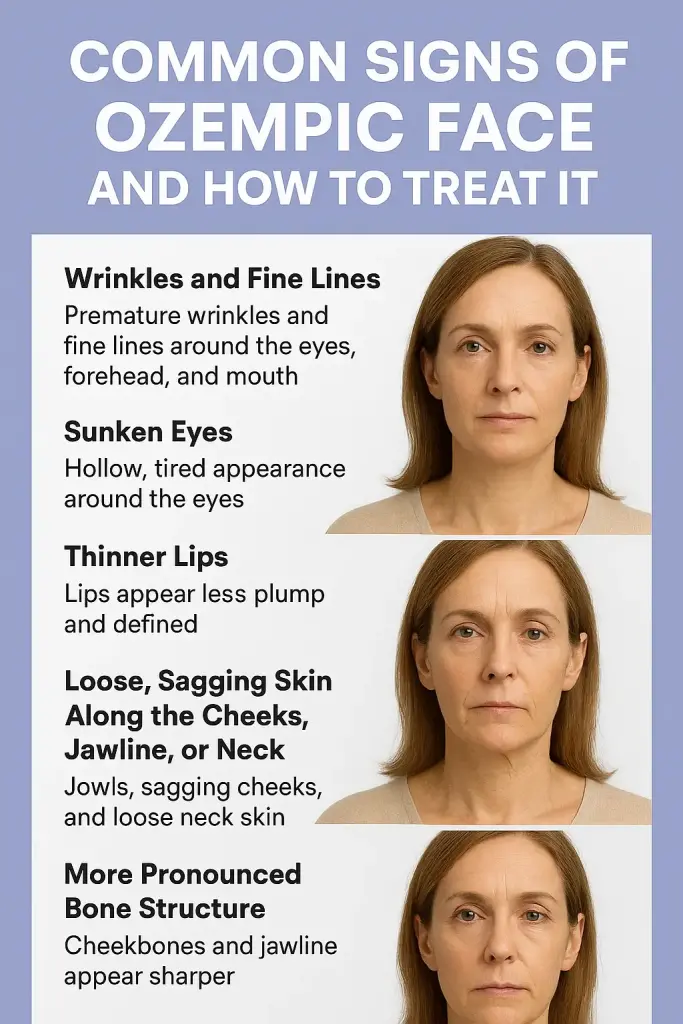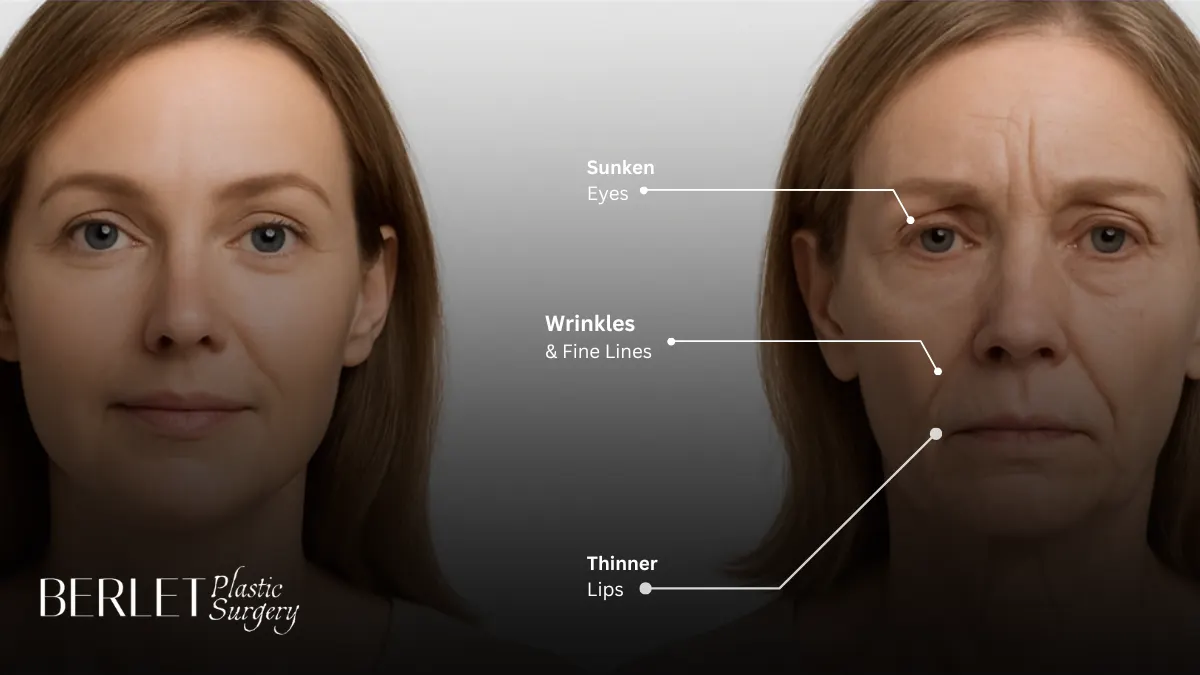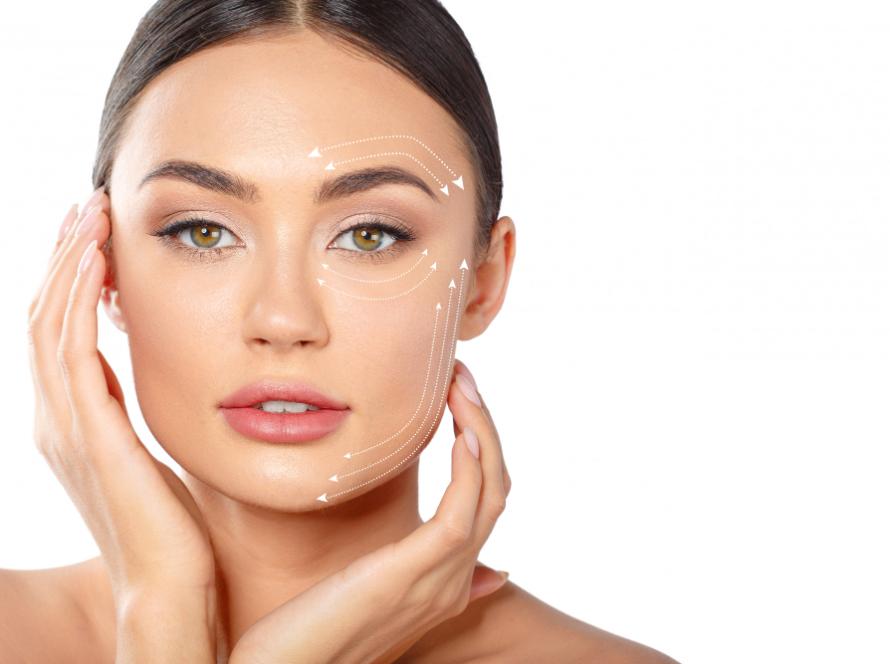Ozempic face may be one of the most talked-about medications in recent years. Celebrities credit it for their transformations, social media influencers rave about it, and doctors recognize it as a research-backed breakthrough that’s changing the conversation around weight loss.
The generic name for Ozempic and Wegovy™ is semaglutide, a GLP-1 medication originally developed to help manage diabetes. Today, it’s also being prescribed for weight loss — and the results can be dramatic. In fact, recent studies show that GLP-1 medications like Ozempic, Wegovy, and Mounjaro® (tirzepatide) don’t just help with weight loss; they may also reduce the risk of heart disease, fatty liver, sleep apnea, and other chronic conditions.
According to the CDC studies on obesity, more than 42% of Americans live with obesity, defined as a body mass index (BMI) of 30 or higher. For many, lifestyle changes alone aren’t enough to make progress, and these new medications are offering a lifeline. For patients with a BMI below 30, a healthy diet and regular exercise remain the gold standard, but for those struggling with obesity, Ozempic has become a game-changer.
But while the benefits are impressive, there are also side effects to consider. One of the most visible — and most talked about — is a change in facial appearance often referred to as “Ozempic face.” This cosmetic concern doesn’t pose health risks, but for many patients it can affect confidence and self-image.
What is Ozempic Face?
“Ozempic face” refers to the facial changes that can appear after rapid weight loss. Patients may see hollow cheeks, sagging skin, deeper wrinkles, or a gaunt appearance. These changes are not a direct side effect of the medication itself, but rather the result of losing weight quickly — especially facial fat that normally provides youthful volume and support.
This phenomenon isn’t unique to Ozempic®. Similar effects are often seen after bariatric surgery, Mounjaro®, Wegovy™, or even lifestyle changes that lead to sudden weight loss.
Why Does It Happen?
Facial fat plays a crucial role in keeping the skin smooth, plump, and lifted. When weight is lost rapidly:
- Facial volume decreases. Subcutaneous fat (just beneath the skin) diminishes, leading to hollowing and sagging.
- Aging accelerates. Natural age-related fat loss occurs over decades, but rapid weight loss can mimic or speed up this process.
- Skin elasticity declines. Levels of elastin and collagen drop, leaving skin looser and less resilient.
Older adults are even more prone to these effects since their facial fat reserves are already lower before weight loss begins.
Common Signs of Ozempic Face
Patients often describe their appearance as “tired” or “aged” after losing weight quickly. Hallmarks include, wrinkles, sunken eyes, thinner lips, sagging skin arround jawlin and neck and more proounced structure.

| Sign | Explanatio |
| Wrinkles and Fine Lines | As facial fat disappears, the skin loses its natural support. Reduced collagen and elastin production create premature wrinkles and fine lines around the eyes, forehead, and mouth, making patients look older than they feel. |
| Sunken Eyes | Rapid weight loss reduces the fat pads around the eyes, causing a hollow, tired appearance — one of the most noticeable symptoms of Ozempic face. |
| Thinner Lips | Subcutaneous fat normally keeps lips plump and youthful. With Ozempic-related weight loss, lips may look thinner and less defined, aging the overall facial profile. |
| Loose, Sagging Skin (Cheeks, Jawline, Neck) | Loss of skin elasticity after significant weight loss can cause drooping in the midface and jawline, leading to jowls, sagging cheeks, and loose neck skin — frequent complaints in patients with Ozempic face. |
| More Pronounced Bone Structure | While some enjoy sharper features after weight loss, the loss of facial fat from semaglutide often makes cheekbones and jawlines look overly prominent, creating a hollow, gaunt appearance. |
Can You Prevent It?
The best way to minimize facial changes is to aim for gradual, steady weight loss — about 1–2 pounds per week — while maintaining a balanced diet, proper hydration, and a strong skincare routine. Protein intake and strength training can also help preserve muscle and skin health.
Does Ozempic Face Go Away?
Unfortunately, once the fat and elasticity are lost, the facial changes typically remain unless weight is regained. However, this does not mean you are without options.
Cosmetic Solutions for Ozempic Face
At Berlet Plastic Surgery, we specialize in ozempic face procedures and other advanced treatments designed to restore youthful facial contours and tighten skin affected by rapid weight loss. Options may include:
- Injectables & Fillers: Botox®, dermal fillers, and lip fillers can smooth wrinkles and replace lost volume.
- Skin Tightening Procedures: Non-surgical treatments like microneedling, PRP therapy, and RF skin tightening improve tone and elasticity.
- Surgical Enhancements: Procedures such as cheek implants, fat grafting, or a facelift provide lasting rejuvenation and restore balance to facial features.
The Bottom Line
“Ozempic face” may change how you look, but it is not harmful to your health. If you’re bothered by sagging or hollow features, you don’t need to live with them. With today’s advanced cosmetic treatments and surgical options, it’s possible to look as good as you feel after weight loss.
If you’re considering Ozempic face surgery or other rejuvenation treatments, our team at Berlet Plastic Surgery can create a personalized plan to restore your confidence and natural beauty. For more articles, research and daily cosmetic surgery tips, follow Berlet Plastic Surgery Blog.




